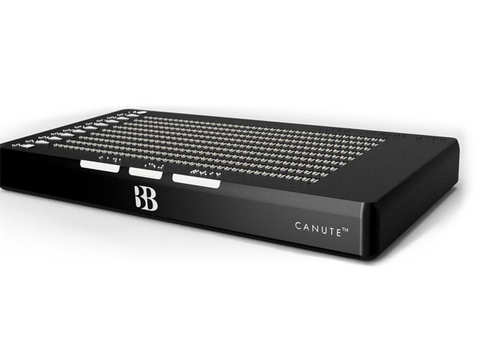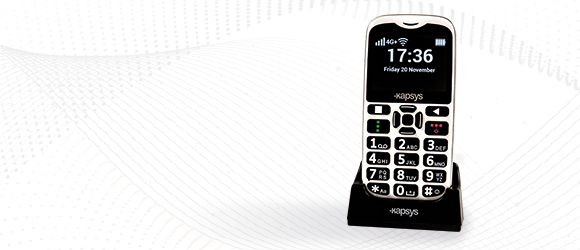Speech-to-Text Devices for Low Vision: Bridging the Communication Gap
Wiki Article
Discover Innovative Tools Made for the Visually Damaged
The advancement of innovative tools for the aesthetically impaired represents a significant improvement in availability and freedom. Technologies such as clever glasses with AI capacities and mobile applications created to supply acoustic descriptions are reshaping daily experiences for individuals.Smart Glasses for Navigation

Smart glasses made for navigation are reinventing the method aesthetically damaged individuals communicate with their atmosphere. These innovative tools make use of a mix of camera innovation, expert system, and acoustic responses to give real-time info about environments. By employing obstacle detection systems, smart glasses can notify users to prospective risks, allowing much safer wheelchair in both unknown and acquainted settings.
The combination of GPS modern technology better boosts navigating abilities, permitting individuals to get auditory directions as they move. This hands-free approach not just cultivates freedom however likewise empowers visually damaged individuals to browse urban landscapes with enhanced confidence. Furthermore, many smart glasses are outfitted with features that determine sites and street signs, providing contextual details that enhances the customer experience.
In addition, the advancement of these devices is continually progressing, with business functioning to enhance the accuracy of things recognition and expand the series of navigational functions. As smart glasses end up being much more budget friendly and available, they hold the potential to significantly change life for visually damaged individuals. Ultimately, these innovative devices represent a crucial action toward inclusivity, offering improved mobility and a better sense of freedom for individuals browsing the world around them.

Mobile Apps for Daily Living
How can mobile applications enhance the day-to-days live of aesthetically impaired people? Mobile applications are reinventing the method visually damaged individuals navigate their settings, handle day-to-day jobs, and accessibility details. These applications supply necessary support through different performances, fostering freedom and enhancing quality of life.Numerous ingenious mobile applications are created particularly for daily living. Applications like Be My Eyes connect aesthetically damaged individuals with sighted volunteers using video telephone calls, enabling them to obtain real-time support with jobs such as reading tags or navigating strange spaces. Likewise, Seeing AI, developed by Microsoft, uses expert system to describe environments, reviewed text, and recognize things, successfully changing a mobile phone right into a powerful device for everyday assistance.
Furthermore, navigation apps tailored for the aesthetically damaged, such as Aira and BlindSquare, offer audio-based instructions and ecological information, making it possible for customers to traverse their surroundings securely and with confidence. Past navigation and immediate aid, mobile apps also support organization and task monitoring, with features that aid individuals establish tips, develop order of business, and track appointments. In summary, mobile applications serve as essential resources, empowering aesthetically damaged individuals to lead more independent and satisfying lives.
Wearable Technologies for Help
Empowerment with innovation is progressively obvious in the realm of wearable devices created to help aesthetically damaged individuals. These ingenious tools integrate seamlessly right into life, boosting navigating and supplying vital comments to users. For instance, smart glasses equipped with cameras can identify faces and check out message aloud, allowing individuals to connect even more confidently in social and professional setups.One more notable innovation is the usage of haptic feedback systems in wearable gadgets. These systems utilize resonances or other responsive signals to convey information regarding the user's atmosphere, such as obstacles or modifications in terrain, enhancing mobility and safety and security. Wearable modern technologies likewise consist of wristbands that attach to mobile phones, notifying individuals to notifications through refined vibrations, hence improving connection without reliance on visual signs.
As these technologies remain to advance, they are not only enhancing independence for visually damaged people but likewise cultivating a higher sense of addition in culture. By linking the gap between difficulties encountered in daily living and the potential for freedom, wearable technologies function as essential devices Screen readers for the blind in the pursuit for equality and empowerment for those with aesthetic disabilities.
Sound Summary Devices
Sound summary tools play a vital duty in boosting availability for aesthetically damaged people, giving them with the ability to engage with visual media. OCR devices for the blind. These tools provide narrated descriptions of essential visual elements in films, television programs, and live efficiencies, making sure that customers can totally understand the context and emotions communicated through visualsAudio description can be incorporated right into numerous systems, consisting of streaming services, cinema screenings, and live theater. Lots of prominent streaming solutions now include audio description as an ease of access feature, allowing visitors to pick it quickly. In enhancement to traditional media, specialized apps additionally exist, giving audio summaries for art exhibits, museums, and various other cultural occasions.
The performance of audio description rests on the ability of the narrators, who have to communicate aesthetic information succinctly without detracting from the initial sound. Developments in this field are additionally leading the way for even more personalized experiences, where users can change the level of detail and pacing according to their choices.
Braille Innovations and Tools
Braille innovations and tools have actually substantially transformed the means aesthetically impaired people engage with text and details. Modern developments have actually led to the advancement of versatile devices that enhance proficiency and independence amongst users.
In addition, portable Braille notetakers combine standard Braille input with modern functionalities, helping with note-taking, scheduling, and document editing on the go. Speech-to-text devices for low vision. These small tools frequently feature text-to-speech capacities, bridging the void in between Braille and auditory info
Additionally, innovative Braille printers have arised, allowing individuals to generate Braille tags, files, and academic products efficiently. This ease of access promotes better participation in specialist and academic settings, ultimately promoting inclusivity.
In addition, research study into wise Braille innovations continues to increase. Tools that integrate expert system are being discovered to provide real-time navigating support and contextual info, boosting the individual experience in diverse setups. Generally, these technologies mirror a dedication to empowering aesthetically damaged individuals with innovation, ensuring they can quickly access and engage with the world around them.

Conclusion
The innovation of innovative tools for the aesthetically damaged considerably improves freedom and quality of life. Smart glasses, mobile applications, wearable innovations, audio summary devices, and Braille innovations collectively equip people by providing important navigating help, ecological awareness, and enhanced analysis experiences. These modern technologies not just foster better inclusion but likewise promote autonomy in everyday tasks, ultimately adding to an extra equitable and available society for visually damaged individuals. Continued growth in this area holds assurance for further enhancements.As clever glasses come to be a lot more inexpensive and accessible, they hold the possible to considerably change everyday life for visually damaged individuals. Mobile apps are changing the method visually damaged individuals navigate their settings, handle daily jobs, and gain access to information. Applications like Be My Eyes connect aesthetically impaired customers with sighted volunteers through video telephone calls, enabling them to get real-time aid with tasks such as reading labels or navigating strange areas.Additionally, navigating apps tailored for the aesthetically impaired, such as Aira and BlindSquare, provide audio-based instructions and ecological information, making it possible for customers to traverse their environments securely and confidently.The advancement of innovative tools for the visually damaged substantially enhances self-reliance and top quality of life.
Report this wiki page